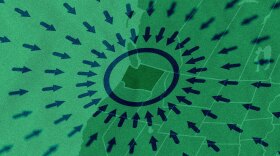“It’s not a question of if, but when, the next volcanic event will occur”
When it blows, Mount Rainier might produce “Lahar,” or volcanic mudflow, that could cause property losses of up to $6 billion in the Puyallup Valley, a new study by the Washington State Department of Natural Resources shows.
Due to the weakened rocks that make up the upper west flank of Mount Rainier, the Puyallup Valley is considered highly susceptible to lahars, the DNR reported in a press release. And, Lahar-related flooding has the potential to reach as far as the Commencement Bay and Elliott Bay, including the ports of Seattle and Tacoma.
“We now have a much better estimate of the economic impact of a major lahar flowing from Mount Rainier,” said Dave Norman, Washington State Geologist and manager of the DNR Geology and Earth Resources Division. “It’s not a question of if, but when, the next volcanic event will occur.”
DNR’s description of the above map: Hazard zones for lahars, lava flows, and pyroclastic flows from Mount Rainier (Hoblitt and others, 1998) in the eleven river valleys draining Mount Rainier (labeled in black). The colored areas could be inundated if events similar in size to those of the past occurred today. Major lahars have occurred every 500 to 1,000 years and smaller flows more frequently. The hazard from lahars is not equal in all valleys. The Puyallup Valley is the valley most susceptible to lahars caused by flank collapse, owing to the weak rocks composing the upper west flank of the volcano. The zone of lahar-related flooding extends as far as Commencement Bay and the Port of Tacoma and Elliott Bay and the Port of Seattle.
Mount Rainier has produced major lahars every 500 to 1,000 years and smaller flows more frequently, the DNR stated. The most recent major lahar to reach the Puget Lowland was the Electron Mudflow about 600 years ago. It was more than 100 feet thick at the community of Electron and as much as 20 feet thick at Orting.
Lahars, which have the consistency of wet concrete, can be caused by volcanic activity when an eruption of lava or hot gasses melts a glacier. They also can be produced by avalanches and earthquakes.







